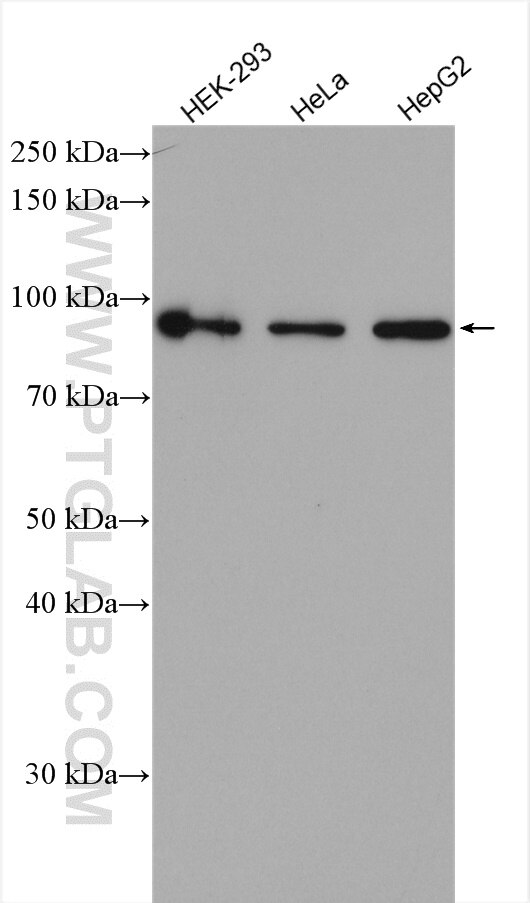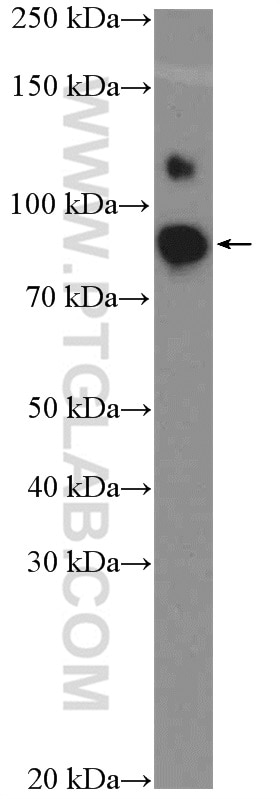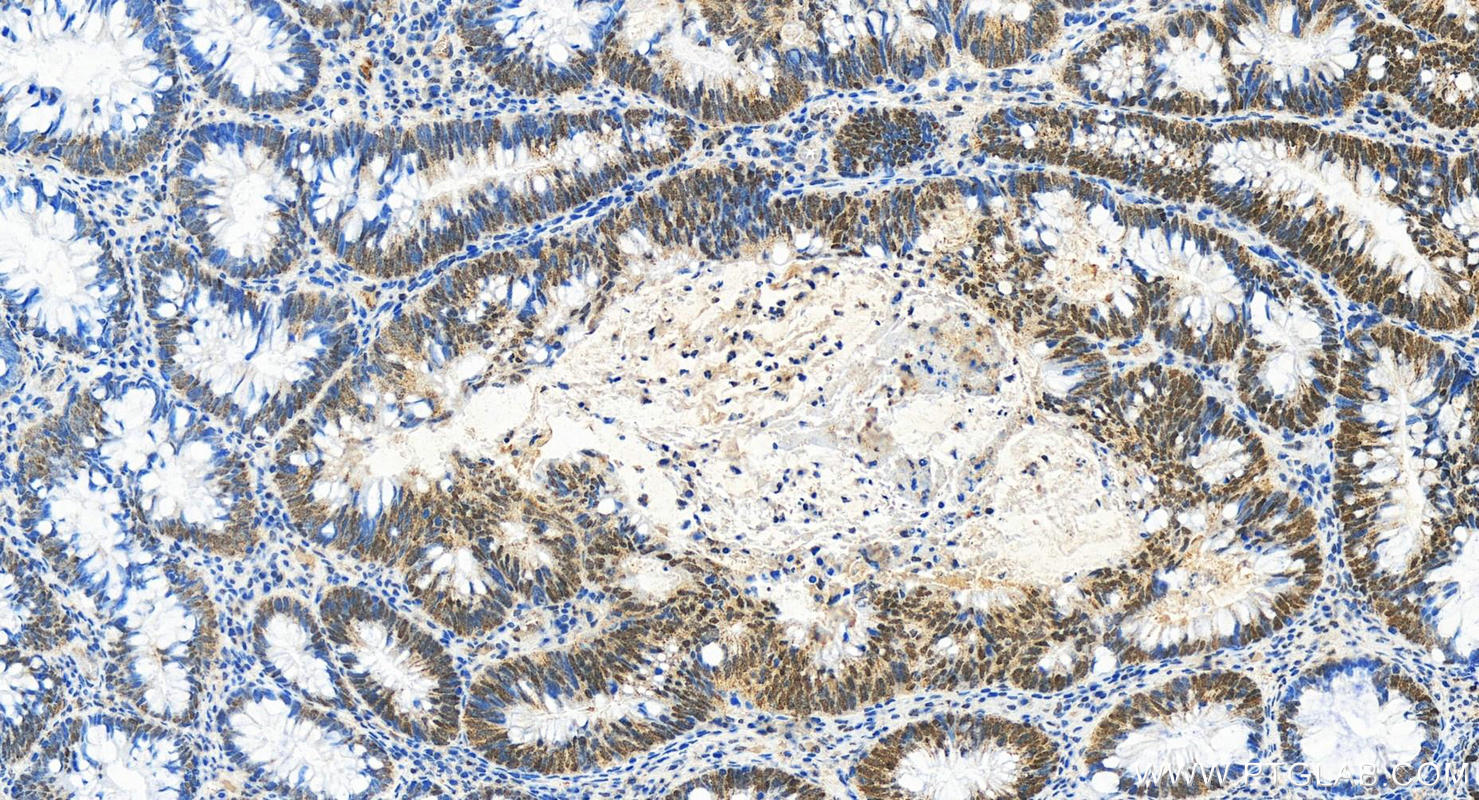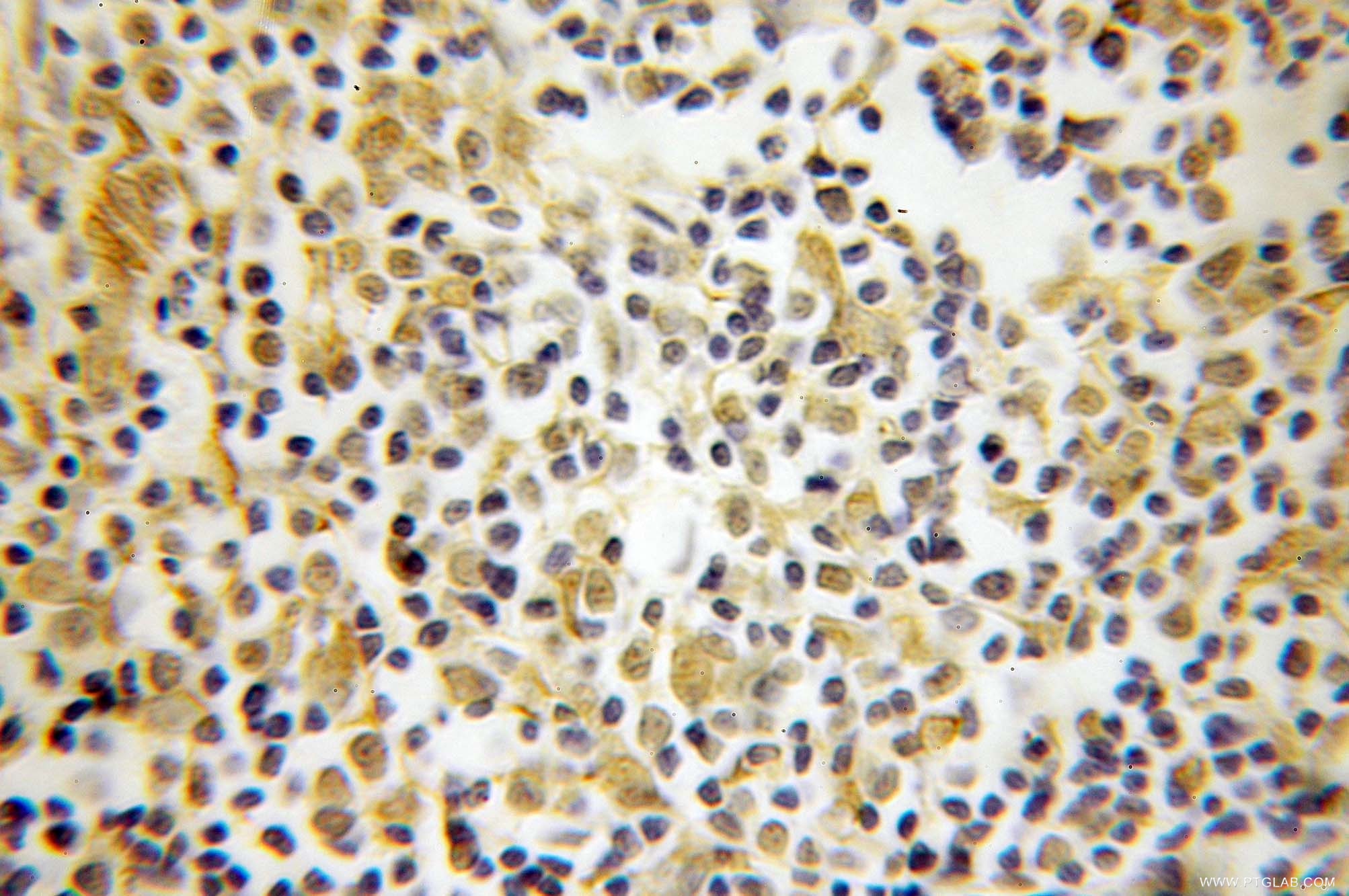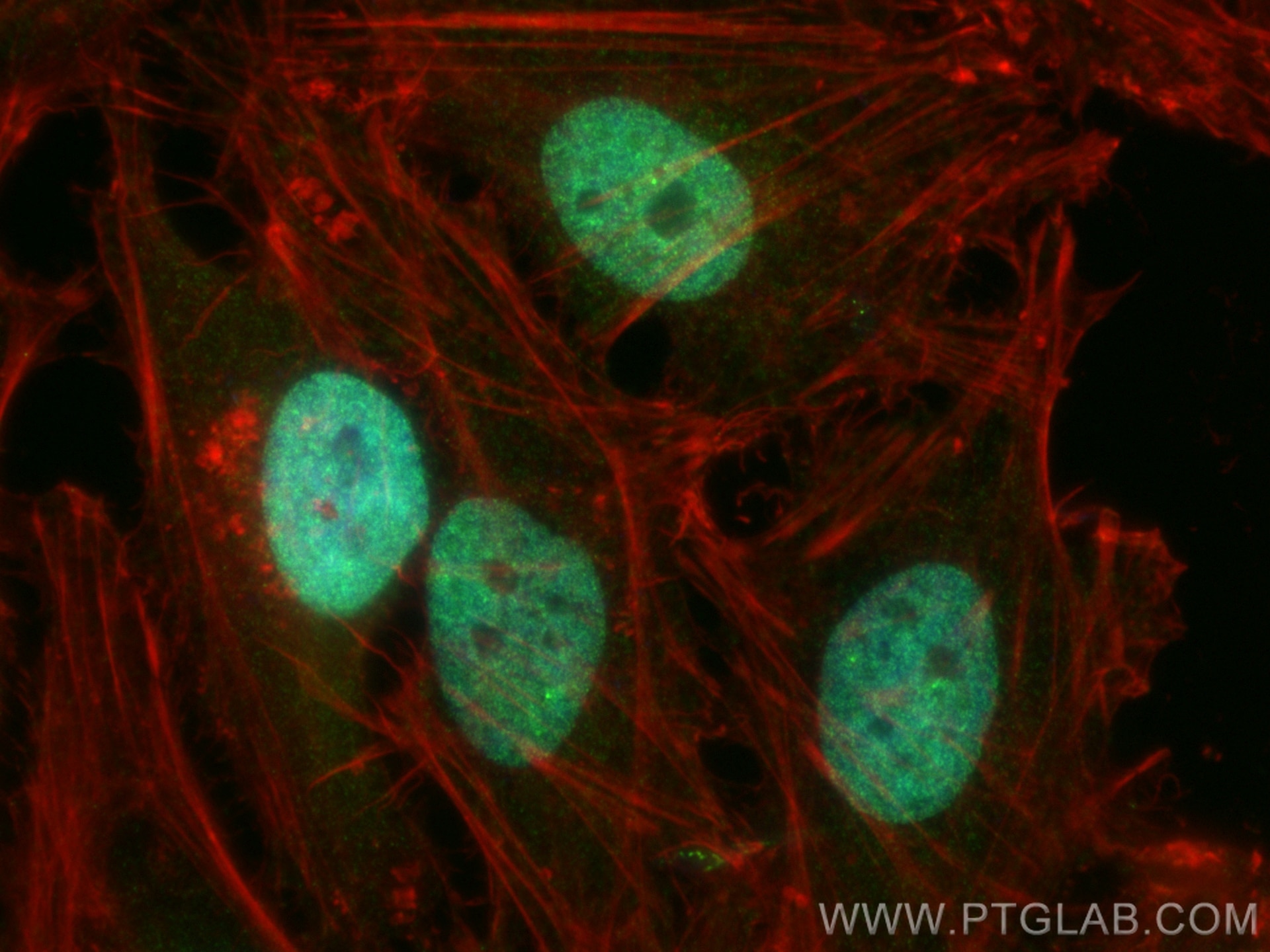- Featured Product
- KD/KO Validated
OCT1 Polyklonaler Antikörper
OCT1 Polyklonal Antikörper für WB, IHC, IF/ICC, IP, ELISA
Wirt / Isotyp
Kaninchen / IgG
Getestete Reaktivität
human und mehr (3)
Anwendung
WB, IHC, IF/ICC, IP, ChIP, ELISA
Konjugation
Unkonjugiert
Kat-Nr. : 10387-1-AP
Synonyme
Geprüfte Anwendungen
| Erfolgreiche Detektion in WB | HEK-293-Zellen, HeLa-Zellen, HepG2-Zellen, NCCIT-Zellen |
| Erfolgreiche IP | HeLa-Zellen |
| Erfolgreiche Detektion in IHC | humanes Kolonkarzinomgewebe, humanes Lymphomgewebe Hinweis: Antigendemaskierung mit TE-Puffer pH 9,0 empfohlen. (*) Wahlweise kann die Antigendemaskierung auch mit Citratpuffer pH 6,0 erfolgen. |
| Erfolgreiche Detektion in IF/ICC | HeLa-Zellen |
Empfohlene Verdünnung
| Anwendung | Verdünnung |
|---|---|
| Western Blot (WB) | WB : 1:2000-1:12000 |
| Immunpräzipitation (IP) | IP : 0.5-4.0 ug for 1.0-3.0 mg of total protein lysate |
| Immunhistochemie (IHC) | IHC : 1:1000-1:4000 |
| Immunfluoreszenz (IF)/ICC | IF/ICC : 1:500-1:2000 |
| It is recommended that this reagent should be titrated in each testing system to obtain optimal results. | |
| Sample-dependent, check data in validation data gallery | |
Veröffentlichte Anwendungen
| KD/KO | See 1 publications below |
| WB | See 13 publications below |
| IHC | See 1 publications below |
| IF | See 1 publications below |
| ChIP | See 2 publications below |
Produktinformation
10387-1-AP bindet in WB, IHC, IF/ICC, IP, ChIP, ELISA OCT1 und zeigt Reaktivität mit human
| Getestete Reaktivität | human |
| In Publikationen genannte Reaktivität | human, Hausschwein, Maus, Ratte |
| Wirt / Isotyp | Kaninchen / IgG |
| Klonalität | Polyklonal |
| Typ | Antikörper |
| Immunogen | OCT1 fusion protein Ag0586 |
| Vollständiger Name | POU class 2 homeobox 1 |
| Berechnetes Molekulargewicht | 76 kDa |
| Beobachtetes Molekulargewicht | 90 kDa |
| GenBank-Zugangsnummer | BC003571 |
| Gene symbol | POU2F1 |
| Gene ID (NCBI) | 5451 |
| Konjugation | Unkonjugiert |
| Form | Liquid |
| Reinigungsmethode | Antigen-Affinitätsreinigung |
| Lagerungspuffer | PBS with 0.02% sodium azide and 50% glycerol |
| Lagerungsbedingungen | Bei -20°C lagern. Nach dem Versand ein Jahr lang stabil Aliquotieren ist bei -20oC Lagerung nicht notwendig. 20ul Größen enthalten 0,1% BSA. |
Hintergrundinformationen
The POU class 2 homeobox 1 (POU2F1), also known as octamer-binding transcription factor-1 (OCT-1), is a ubiquitous nuclear protein that regulates the transcription of target genes by binding to a cis-acting octamer element(5'-ATTTGCAT-3'). It participated in the regulation of housekeeping genes, including histone H2B and snRNAs, for cell differentiation and proliferation [PMID:3462701]. In addition, it functions as a cellular stress sensor that modulates activities of tissue-specific target genes involved in immune and inflammatory responses [PMID:16322220]. It also acts as a repressor for the cytokine-inducible, NF-kB-dependent expression of E-selectin and the vascular cell adhesion molecule during vascular inflammation. Otherwise, it can interact with nuclear hormone receptors, such as the retinoid X receptor, the thyroid hormone receptor and the glucocorticoid receptor, and influence their transcription activity[PMID:17192276].
Protokolle
| PRODUKTSPEZIFISCHE PROTOKOLLE | |
|---|---|
| WB protocol for OCT1 antibody 10387-1-AP | Protokoll herunterladen |
| IHC protocol for OCT1 antibody 10387-1-AP | Protokoll herunterladenl |
| IF protocol for OCT1 antibody 10387-1-AP | Protokoll herunterladen |
| IP protocol for OCT1 antibody 10387-1-AP | Protokoll herunterladen |
| STANDARD-PROTOKOLLE | |
|---|---|
| Klicken Sie hier, um unsere Standardprotokolle anzuzeigen |
Publikationen
| Species | Application | Title |
|---|---|---|
Mol Biol Evol Long-term artificial selection reveals a role of TCTP in autophagy in mammalian cells. | ||
Food Funct Anti-hyperuricemic potential of stevia (Stevia rebaudiana Bertoni) residue extract in hyperuricemic mice | ||
Food Funct Ferulic acid supplementation alleviates hyperuricemia in high-fructose/fat diet-fed rats via promoting uric acid excretion and mediating the gut microbiota | ||
Cell Oncol (Dordr) The POU2F1/miR-4490/USP22 axis regulates cell proliferation and metastasis in gastric cancer. | ||
iScience MASTL is enriched in cancerous and pluripotent stem cells and influences OCT1/OCT4 levels.
| ||
Mol Cell Endocrinol MiR-451a attenuates free fatty acids-mediated hepatocyte steatosis by targeting the thyroid hormone responsive spot 14 gene. |
